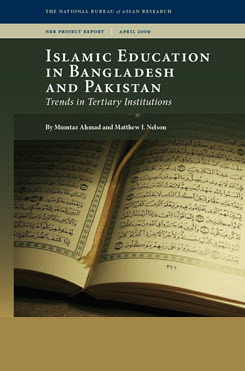NBR Project Report
Islamic Education in Bangladesh and Pakistan
Trends in Tertiary Institutions
In the immediate aftermath of the September 11, 2001 attacks against the United States, analysts and policymakers struggled to determine how South Asia had become “lost” to Islamist extremism and terrorism. A small—but vocal—group of Western-based academics suggested that the proliferation of madrasas, or Islamic schools, were at least in part to blame. The controversial debates sparked by these institutions led NBR in summer 2005 to launch a comprehensive three year survey of Islamic education in South Asia, to examine in depth the relationship between Islamic education and Islamist militancy in the region. This report represents the culmination of the third and final year of NBR’s South Asia Education Survey, which focused exclusively on trends in tertiary-level religious and secular education in Bangladesh and Pakistan. Research findings from these two countries continue to shed new light on the emerging socio-political landscape of Muslim South Asia, with critical implications for U.S. policy and security interests in the region.


